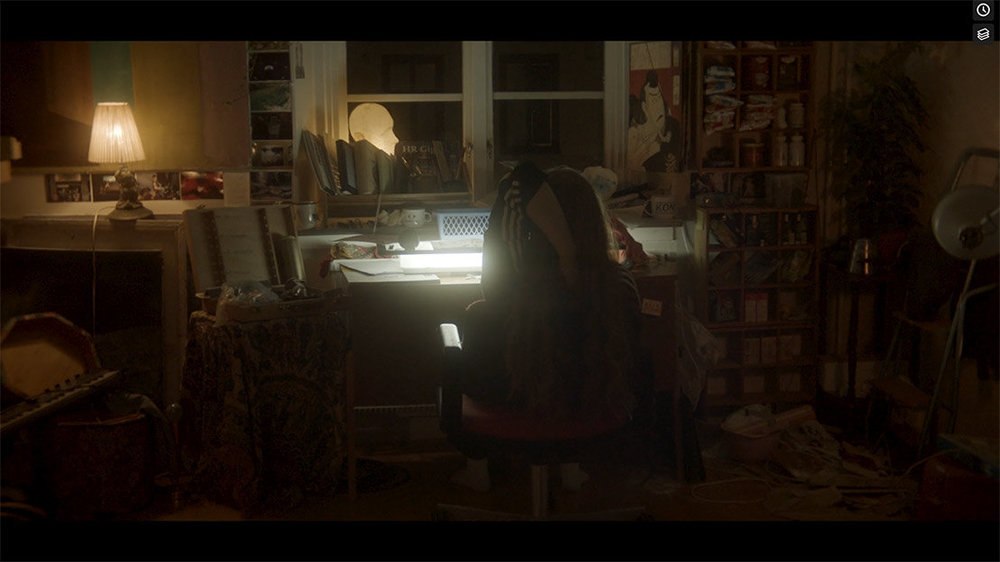
Filip Aladdin
Basic Member-
Posts
10 -
Joined
-
Last visited
Profile Information
-
Occupation
Cinematographer
-
Location
Sweden
Recent Profile Visitors
The recent visitors block is disabled and is not being shown to other users.
-
Hey folks! I'm really not experienced with cinematography but I am shooting a short movie where at one point the character goes outside and goes through a reed field with only a flashlight. What I'm wondering is how would you (more experienced ppl) handle this? The mood is dark. The scene ought to be dark. We've shot it with iPhone as a mockup so you'll get the feeling (look at the pictures) There is no budget for big lamps to illuminate the surroundings, and it's fine. But when I tested with Arri Alexa LF with 400, 800, 1280 and 3200 iso. It didn't look as I wanted. I know the iPhone has its own exposure but I would love to be as close to the mockups as possible. What tips would you give me? What would you do? A really strong flashlight? The closeups i feel is easier. So I won't include them. But it's just about these big exterior shots. Thanks all!
-
Exposure in low light (Amateur who need to clarify)
Filip Aladdin replied to Filip Aladdin's topic in ARRI
Thanks for a fast answer Satsuki! I realise its a bad formulated question and the picture above is not relevant cuz its shot on a black magic 6k. And I don't event think its graded. But maybe this is a better formulated question: What is the "right" way to do for the best end result with least amount of grain and noise in the blacks. If you know that you want crushed blacks in a frame. Do you crush them when u shoot it. 0% exposure on site. Or do you lift them and then crush them in post? -
Hi all. Im not that experienced so maybe this is a really dumb question, but Im confused about exposure in low light situations. Let me try and explain this easy. Im usually navigating my exposure with False color on Alexa. And I was shooting a night scene where the actor is drawing on a "light-table" and the rest of the room is dark. Because it is night and she is drawing in a dark room. Nothing strange about that. (you can see on the first attached picture) I wanted most of the room to be dark and black in the end, after post. So I lit it like that. I watched false color and the parts that I wanted dark was purple and blue on false color. Fine I thought. But its noisy and grain in those parts. And im not really sure how to avoid this. Should I have lit the whole room so the parts that I knew I wanted black wasnt black at the time of the shooting? And then make them black in post? Would that get rid of that noise because of the time of the filming it was information. If someone could explain to me the relations between on set exposure and after post, that would be awesome. But maybe its not that easy and im just to inexperienced. I wonder for my self when I watch "real" movies and night scenes where there are parts in the frame that is completely black and is totally clean and no noise. Did they film it like that when they exposed? Were those parts "purple on false color" when they shot it. Or was it 20% and they fixed it In post. (picture 2) If I know I want something black in the end product should I film it that way with no information on the sensor or should I light it and in post make it darker. I hope you understand what im looking and sorry for not using the right technical words. Best, Filip
-
You still have the VariCam 35 packages? im interested! hit me up aladdin@singsyndicate.com
-
Vignette problem vintage lens on super35 sensor
Filip Aladdin replied to Filip Aladdin's topic in Camera Operating & Gear
Ok! thank you for getting back to me so fast. Im planning on using the whole frame. 16:9 but I guess that's it with those vintage lenses. It'll work out fine! thank you! -
Hi! I have a problem with a Cooke 25-250 T3.9. I tried it on the Panasonic Varicam 35 (shot with 4k and 2k still vignette) and I noticed a small vignette in the corners, even when I Zoomed to different focal length. Do you know what the problem could be? Something about the flange? or the sensor? Its a super35 mm sensor on the varicam. Anyone knows why? I prefer not to crop it digitally after the shoot. Thanks, Filip
-
looking for 25-250 vintage PL lens
Filip Aladdin replied to Filip Aladdin's topic in Cine Marketplace
ok cool! Im interested of buying. Do you have any pictures of it ? Please send if you have some. Email: aladdin@singsyndicate.com -
looking for 25-250 vintage PL lens
Filip Aladdin replied to Filip Aladdin's topic in Cine Marketplace
Hi Joe, thanks for a quick answer. Im looking to buy. What was it before PL? Bayonette? -
Equipment For Sale / Looking For (Pre-Owned)
Filip Aladdin replied to Rick Anderson's topic in Cine Marketplace
Is the Cooke Varotal 25-250mm T3.9 MKII Zoom Lens still for sale? -
Hi! I wanna buy a 25-250 vintage PL zoom lens. Angie, cooke or Lomo. Looking for a soft vintage look to shoot a feature here in Sweden and its hard to find such a lens.









